March itinerary in Japan Day 1 (Hiroshima prefecture)
(Tuesday, March 22)
Table of contents
2. Memorial Cathedral for World Peace
7. Hiroshima Peace Memorial Museum
1. Fudoin
I traveled to Hiroshima and Okayama prefectures from March 22 (Tuesday) for 3 nights and 4 days. This time as well, I sent my luggage to my travel destination and enjoyed the “luggage-free trip”.
I flew from Haneda Airport to Hiroshima Airport. The planes I used are as follows.
Depart Haneda Airport at 8:15, ANA673, arrive at Hiroshima Airport at 9:45
I arrived at Hiroshima Airport and went to Hiroshima city by limousine bus. The limousine buses I used are as follows.
Depart Hiroshima Airport at 10:05, arrive at Hiroshima Station Shinkansen Exit at 10:55, Fare Yen 1,370
After arriving in Hiroshima city, I ate okonomiyaki and headed to Fudoin. The public transportation I used is as follows.
Depart Hiroshima Station at 12:00, Sanyo Line “bound for Onoura”, arrive at Shin-Hakushima Station at 12:03
Depart Shin-Hakushima Station at 12:10, Astramline “bound for Chorakuji”, arrive at Fudoin-mae Station at 12:14, total fare Yen 380
It is about a 2-minute walk from Fudoin-mae Station to Fudoin.
It is not clear when the Fudoin was built, but it is believed that the temple existed at the end of the Heian period (794-1185). Fudoin has declined for a while, but was reconstructed by Ekei Ankokuji , a diplomatic monk of Mori and an aide to Hideyoshi Toyotomi.
On August 6, 1945, Fudoin was exposed to the atomic bomb dropped on Hiroshima City. Fudoin is located about 3.90km from the hypocenter, and although the blast caused damage such as a part of the roof of the Kondo being blown away, it survived the collapse. Fudoin became a host for A-bomb survivors, and the precincts were flooded with many injured and dead.
The Kondo, built in 1540, is a national treasure. Hiroshima City, which was devastated by the atomic bomb, has destroyed and disappeared many of its cultural properties. Fudoin, which has been minimally damaged by the atomic bomb, is the only existing national treasure in Hiroshima City. The main hall is a simple yet powerful building that clearly shows that Fudoin was a former Zen sect.
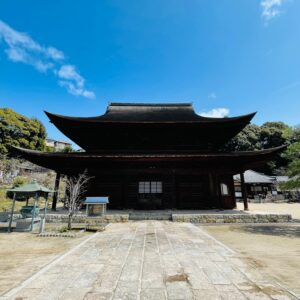
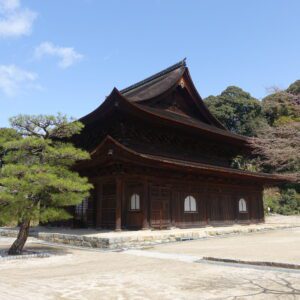
In addition to the national treasure Kondo, the tower gate (built in 1594) and the bell tower (built in 1433) are national important cultural properties. The tower gate was also a wonderful gate that is typical of the former Zen sect.
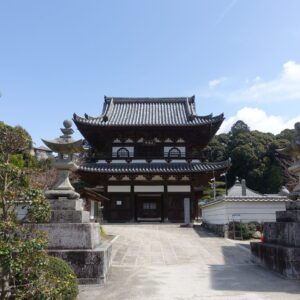
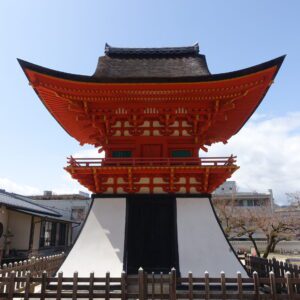
There were many tourists in the Peace Memorial Park, which will be described later, but there were few people in Fudoin. It is easily accessible from the Peace Memorial Park, so it is a temple that many people want to visit.
2. Memorial Cathedral for World Peace
After enjoying the splendor of Fudoin, I went to the Memorial Cathedral for World Peace. The public transportation I used is as follows.
Depart Fudoin at 12:48, Kiryodai / Motomachi line “bound for Hiroshima station”, arrive at Jogakuin-mae at 13:03, fare Yen 220
It is about a 5-minute walk from the bus stop Jogakuin-mae to the Memorial Cathedral for World Peace.
The Memorial Cathedral for World Peace is the cathedral of the Catholic Noboricho Church, which began construction on August 6, 1950 and was completed on August 6, 1954. Designed by Togo Murano, an architect who has worked on many famous buildings such as the Nissay Theater and Shin Kabukiza.
The Memorial Cathedral for World Peace was built with donations from all over the world. This construction was inspired by the idea of the German priest Hugo Makibi Enomiya-Lassalle. He came up with the idea of building a new cathedral not only to mourn the victims of the atomic bomb, but to pray for friendship and world peace around the world.
In 2006, along with the Hiroshima Peace Memorial Museum (main building) designed by Kenzo Tange, the Memorial Cathedral for World Peace was designated as a national important cultural property for the first time as a post-WWII architecture.
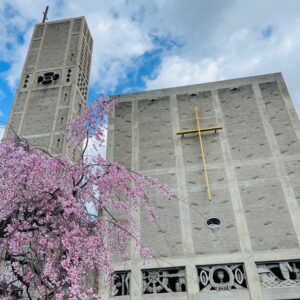

When Pope Giovanni Paolo II visited Hiroshima in 1981, he also stopped by the Memorial Cathedral for World Peace. The chair on which Giovanni Paolo II sat is still on display.

The Memorial Cathedral for World Peace was a wonderful building both inside and out. Like Fudoin, there was no one at the World Peace Memorial Cathedral at the time of my visit. The World Peace Memorial Cathedral is also conveniently located, so I would like many people to visit it.
3. Shukkeien (Asano Park)
After the Memorial Cathedral for World Peace, I went to Shukkeien, which is a little over 5 minutes on foot. Shukkeien is a daimyo garden completed in 1620. It originated from the villa of the feudal lord, which was ordered by Nagaakira Asano, the first feudal lord of the Hiroshima feudal clan.
The garden was designed by Soko Ueda, who was the chief retainer of the Asano family. Ueda Soko has designed many gardens such as the Tokushima Castle Omote-goten Garden and the Nagoya Castle Ninomaru Garden, and is also famous as the founder of the Ueda Soko style in the tea ceremony.
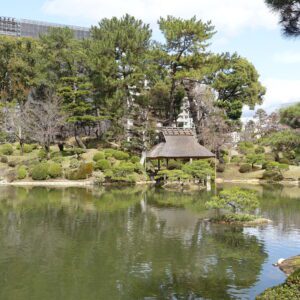

Shukkeien is a national scenic spot and has been selected as one of the 100 Best Historical Parks in Japan. It was also the time when the cherry blossoms began to bloom, and it was crowded with many people.

Admission: Adults Yen 260, high school students Yen 150, elementary and junior high school students Yen 100
Set price of Shukkeien and Hiroshima Prefectural Art Museum: Adults Yen 610, University students Yen 350
The Hiroshima Prefectural Art Museum is next to Shukkeien.
4. Hiroshima Castle
After enjoying the beautiful scenery of Shukkeien, I went to Hiroshima Castle, which is less than 10 minutes on foot.
The history of Hiroshima Castle begins when Mori Terumoto entered the castle in 1591. Hiroshima Castle was incomplete when Mori Terumoto entered the castle. Finally, Hiroshima Castle was completed in 1599. At the time of completion, it was a large-scale castle with a triple moat, and it is said that it was the largest castle comparable to Osaka Castle at that time. Along with Nagoya Castle and Okayama Castle, it is counted as one of Japan’s three great castles on the plains (there is also a theory that Japan’s three great castles on the plains are Matsumoto castle, Nijo castle, and Hiroshima castle). It has also been selected as one of the Japan’s 100 Best Castles. It is also designated as a national historic site.
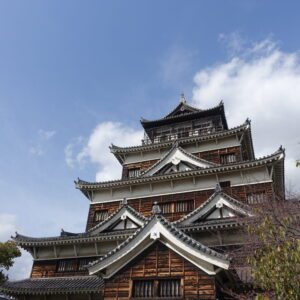
The castle tower of Hiroshima Castle collapsed due to the impact of the atomic bomb in 1945. After that, in 1958, the appearance was restored by steel-framed reinforced concrete construction. However, only the 5th floor on the top floor is made of wood. The current castle tower has a problem of earthquake resistance due to aging, and restoration by wooden construction is being considered.
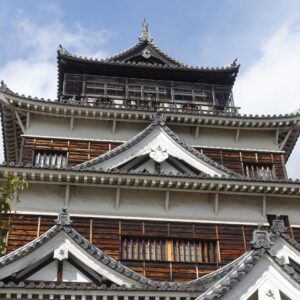
Admission: Adults Yen 370, Seniors (65 years old and over) Yen 180, High school students Yen 180
5. Atomic Bomb Dome
Next, I went to the Atomic Bomb Dome, which is about a 15-minute walk from Hiroshima Castle.
The Atomic Bomb Dome was built in 1915 as a facility for displaying and selling products in Hiroshima Prefecture. Before the bombing, it was called the Hiroshima Prefectural Industrial Promotion Center.
The Hiroshima Prefectural Industrial Promotion Center (Atomic Bomb Dome) is located 150 meters east of the hypocenter, and the blast almost completely destroyed the main body of the three-story building. However, it remained around the central dome part, the framework and the outer wall. However, all the people in the hall died instantly.
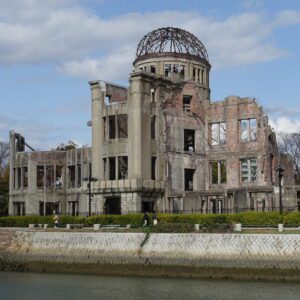
In December 1996, it was registered as a World Heritage Site as a building that conveys the devastation of nuclear weapons.
6. Children’s Peace Monument
The “Children’s Peace Monument“, located just across the Motoyasu Bridge from the Atomic Bomb Dome, is modeled after Sadako Sasaki, who died at the age of 12 due to leukemia caused by the atomic bombing at the age of two. This monument was made by a fund-raising campaign by Sadako Sasaki’s classmates.

The stone monument of the statue is inscribed, “This is our cry. This is our pray. To bring peace to the world.” Many paper cranes are placed around the statue.

Sadako Sasaki is explained in detail at the Hiroshima Peace Memorial Museum. She has also been featured in many books, movies, songs and textbooks. She is one of the leading figures to convey the misery of the atomic bomb. The story of Sadako Sasaki, who tried desperately to live by folding many cranes, which are said to be 1,500 or 2,000 even after she was hospitalized due to leukemia, still appeals to many people.
7. Hiroshima Peace Memorial Museum
The Hiroshima Peace Memorial Museum, located in the same Peace Memorial Park as the “Atomic Bomb Dome” and “Children’s Peace Monument,” opened in 1955. A large number of materials affected by the atomic bomb are on display.
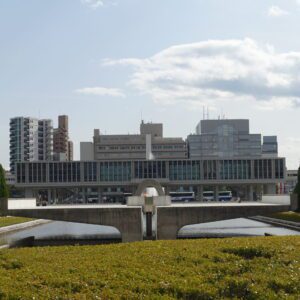
I have visited the Hiroshima Peace Memorial Museum several times. I had the impression that many of the past exhibition methods were surprising and frightening models. On the other hand, this time, I had the impression that it was a calm display method that could be read in writing, along with exhibits such as clothes that were exposed to the bomb and photographs of the victims. I think the current exhibition method gives a deeper understanding of the atomic bomb.

As mentioned earlier, the Hiroshima Peace Memorial Museum (main building) designed by Kenzo Tange is designated as a national important cultural property along with the Memorial Cathedral for World Peace.
Admission: Yen 200 for adults, Yen 100 for high school students
The memorial monument for hiroshima, city of peace in front of the Hiroshima Peace Memorial Museum has the inscription “Let all the souls here rest in peace. For we shall not repeat the evil.” Russia’s suggestion to Ukraine to use nuclear weapons seems to be trampling on the wish that “we shall not repeat the evil.” Many people were praying at the memorial monument for hiroshima, city of peace.
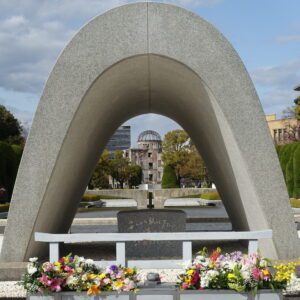
8. Shirakami-sha Shrine
I went to Shirakami-sha Shrine, which is less than 10 minutes on foot from the Hiroshima Peace Memorial Museum. It is located along “Peace Boulevard”.
The Shirakami-sha Shrine was destroyed by the atomic bomb in 1945, but was rebuilt in 1955. In the precincts, there are traces of the bombing, such as “A-bombed camphor tree”.
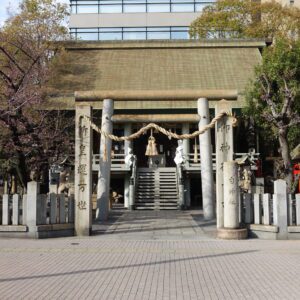
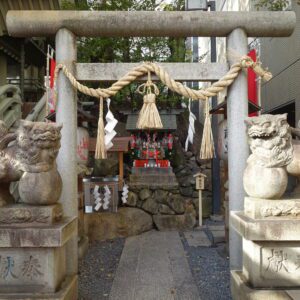
Note: The departure / arrival times, fares of transportation, admission fees, meal fees, etc. listed in the text are as of the time of writing the BLOG. Please check for yourself when you go on a trip as it may change in the future.
